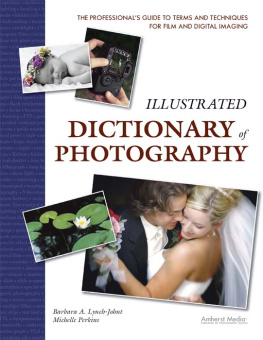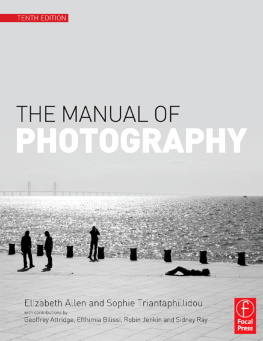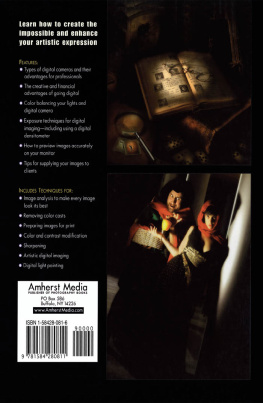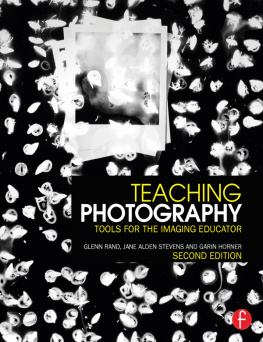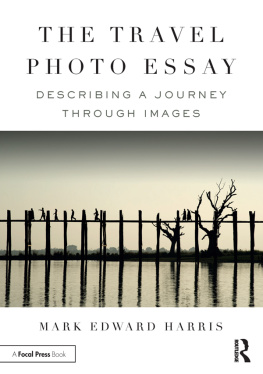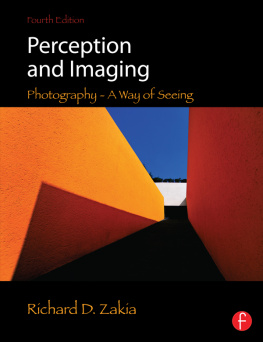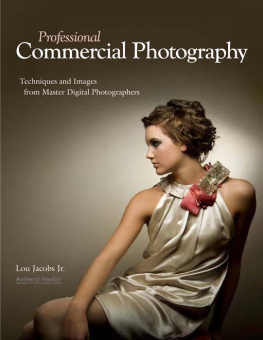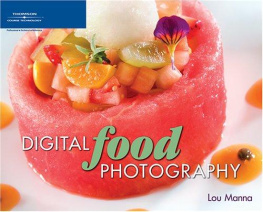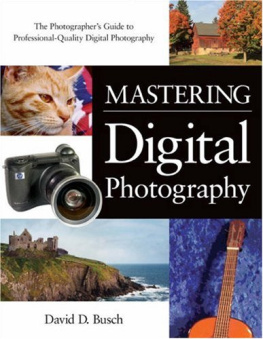ACKNOWLEDGMENTS
The authors wish to thank the photographers who contributed images to this project: Bill Hurter, Jeff Smith, Jeff and Kathleen Hawkins, Tim Schooler, and Jeffrey and Julia Woods. Without them, this book would not have been possible.
We would also like to thank WDVX (www.wdvx.com) for the countless hours of great entertainment we enjoyed while writing this book. We appreciate their commitment to Americana music and public radio.
FROM BARBARA LYNCH-JOHNT
To Madeleine, who has been fascinated by cameras for as long as I can remember, and whose vision always inspires me.
FROM MICHELLE PERKINS
Thank you to Ron, whose fearlessness and creativity are both (happily) quite contagious.
Copyright 2008 by Barbara A. Lynch-Johnt and Michelle Perkins.
All rights reserved.
Unless otherwise noted, all photographs by Michelle Perkins.
Front cover photographs by Jeff and Kathleen Hawkins (top left); Michelle Perkins (top right, bottom left); and Jeffrey and
Julia Woods (bottom right).
Back cover photographs by Michelle Perkins.
Published by:
Amherst Media, Inc.
P.O. Box 586
Buffalo, N.Y. 14226
Fax: 716-874-4508
www.AmherstMedia.com
Publisher: Craig Alesse
Editorial Assistance: Carey Maines, John S. Loder
ISBN-13: 978-1-58428-222-8
Library of Congress Control Number: 2007926857
Printed in Korea.
10 9 8 7 6 5 4 3 2 1
No part of this publication may be reproduced, stored, or transmitted in any form or by any means, electronic, mechanical, photocopied, recorded or otherwise, without prior written consent from the publisher.
Notice of Disclaimer: The information contained in this book is based on the authors experiences and opinions. The authors and publisher will not be held liable for the use or misuse of the information in this book.
#
1-bit. A pixel with a bit depth of 1 (21) and, therefore, 2 possible values.
2-bit. A pixel with a bit depth of 2 (22) and, therefore, 4 possible values.

A 2-BIT IMAGE 4 (POSSIBLE COLOR VALUES).
2-D.See two-dimensional.
3-bit. A pixel with a bit depth of 3 (23) and, therefore, 8 possible values. Many early home computers with television displays offered 8-bit color.
3-D.See three-dimensional.
4/3 sensor. A standard proposed by Olympus and Kodak for a universal digital SLR system with a CCD image sensor having a 4:3 aspect ratio.
4-bit. A pixel with a bit depth of 4 (24) and, therefore, 16 possible values.
5-bit. A pixel with a bit depth of 5 (25) and, therefore, 32 possible values.
6-bit. A pixel with a bit depth of 6 (26) and, therefore, 64 possible values.
8-bit. A pixel with a bit depth of 8 (28) and, therefore, 256 possible values. Most Lab, RGB, grayscale, and CMYK images contain 8 bits of data per color channel.

AN 8-BIT IMAGE (256 POSSIBLE COLOR VALUES)
12-bit. (1) A pixel with a bit depth of 12 (212) and, therefore, 4,096 possible values. (2) An image that has three 4-bit channels. Sometimes used in small devices with color displays.
15-bit. An image that has three 5-bit channels combined to create 32,768 possible values. Also called high color.
16-bit. An image that has one 6-bit and two 5-bit channels combined to create 65,536 possible values. Also called high color or, on Macintosh systems, thousands of colors.
18-bit. An image that has three 6-bit channels combined to create 262,144 possible values. Used on some LCD monitors to achieve faster transition times with minimal color sacrifice.
18 percent gray.See middle gray.
24-bit. An image that has three 8-bit channels combined to create 16,777,216 possible values. Also called true color or, on Macintosh systems, millions of colors.

A 24-BIT IMAGE (MILLIONS OF POSSIBLE COLOR VALUES)
32-bit. A 24-bit image with an additional 8 bits of data added either as empty padding space or to represent an alpha channel. Used in Photoshop for HDR imaging.
35mm equivalent focal length. On digital cameras, a standardized format for describing the effective focal length of a lens. This eliminates the need to account for the widely differing sizes of digital-camera image sensors when determining the field of view a lens will provide. This is sometimes referred to simply as the equivalent focal length or the effective focal length. See also focal length.
35mm film. The roll film format most commonly used in still photography. The photographic film is cut into strips that are 35 millimeters wide with six perforations per inch (4.23mm per perforation) along both edges. Also called 135 film.
45-degree lighting.See Rembrandt lighting.
85-series filter.See Wratten numbers.

35MM FILM.
110 film. (1) An early 4x5-inch roll film discontinued in the late 1920s. (2) A 13x17mm cartridge film introduced in 1972 for Kodaks Pocket Instamatic series.
120 film. A format of roll film used by many medium-format cameras. Introduced by Kodak for their Brownie No. 2 in 1901, it remains popular with professional and advanced amateur photographers. The film is 72cm long and bears frame number markings for the three standard image formats (see medium format) on the backing paper. Because it is supplied on a thicker spool than the similar 620 film it has been referred to as large hole. See also 220 film and 620 film.

120 FILM.
135 film.See 35mm film.
220 film. Introduced in 1965, 220 film is the same width as 120 film but double the length (144cm), yielding twice the number of possible exposures per roll. Because there is no backing paper behind the film itself, just a leader and a trailer, 220 film cannot be used with red-window frame indicators. Also, since the film is thinner than a film with a backing paper, a special pressure plate or different film back may be required.
240 film. Cartridge film used in APS cameras.
620 film. A roll film introduced by Kodak in 1931 as an alternative to 120 format. It is essentially the same film on a thinner spool with a narrower flange. For this reason, it is sometimes called small hole film.
645 format. A type of camera that uses 120 film to shoot images with frames that measure 6x4.5cm.
802.11b wireless networking.See Wi-Fi.

